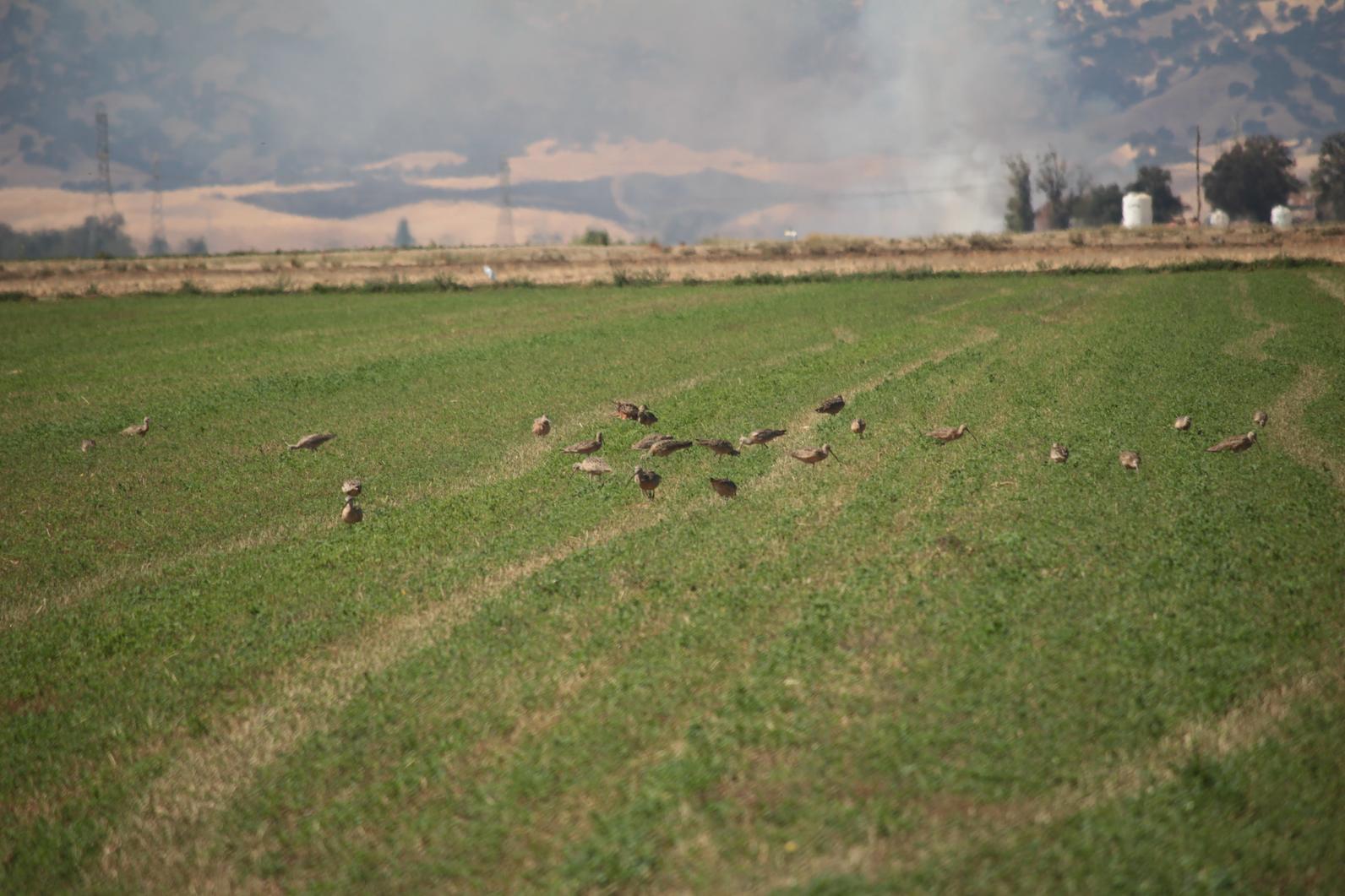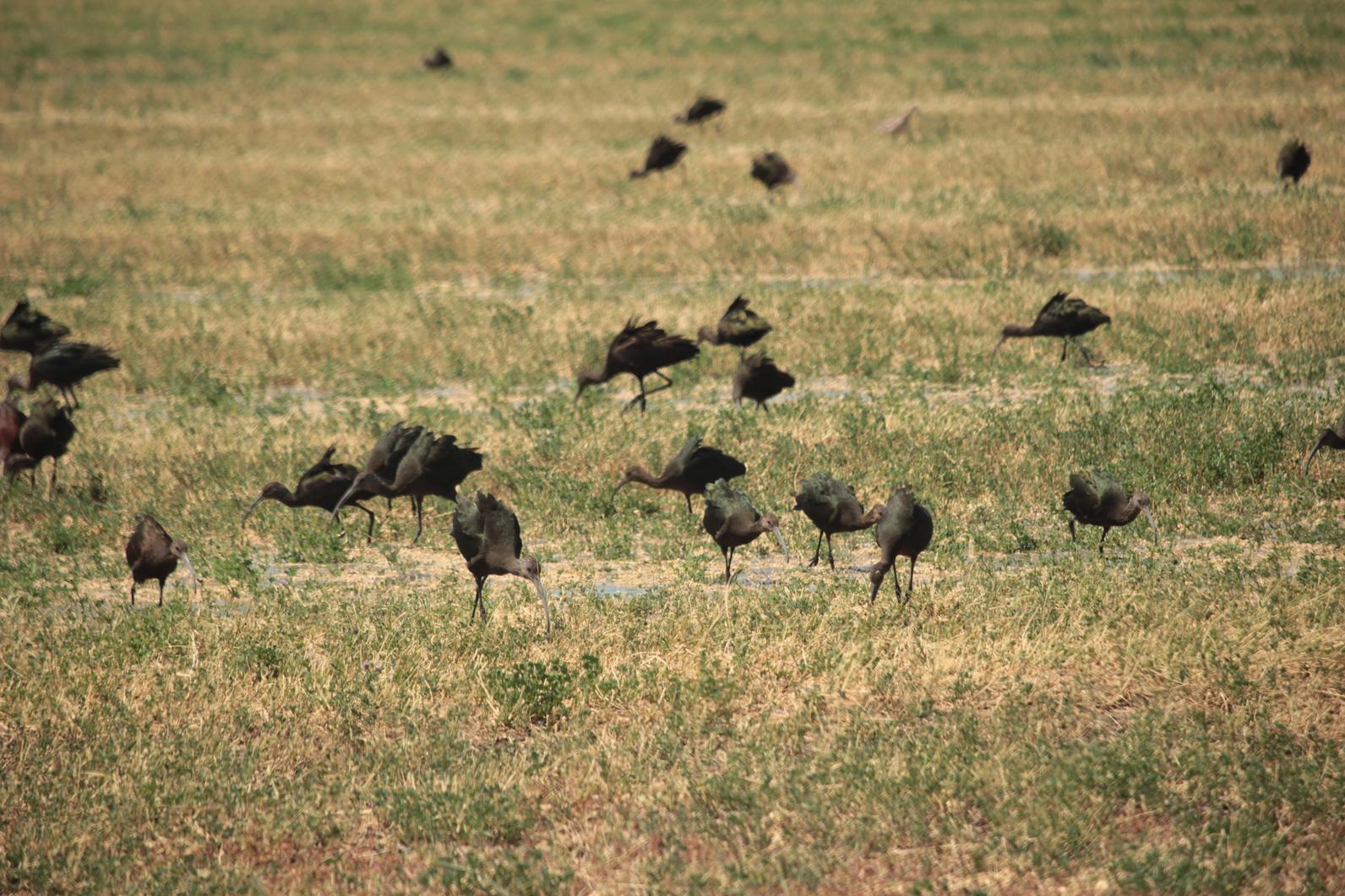
Field technician Kim Sawyer drives hundreds of miles up and down the San Joaquin Valley each week meandering from Modesto to Fresno to visit hundreds alfalfa fields looking for and recording birds using the fields. Some of the usual suspects include Swainson’s Hawks, Great Egrets and Western Kingbirds. Using the information Kim collects, we hope to better understand how this widespread crop provides habitat for birds and identify the most important places to continue growing alfalfa to support birds.
In the Central Valley, alfalfa is second only to rice in the bird diversity supported. According to research by UC Davis, over 132 species of birds use alfalfa in California. In short, alfalfa is important to birds. Alfalfa is also an important crop for dairies, providing food for dairy cows which, in turn, provide milk for our favorite ice creams and cheeses.

In contrast to permanent crops like trees and vines and annual crops like tomatoes and corn, alfalfa is harvested several times a year for a few years in a row. Each month, after alfalfa is harvested, it is irrigated. The water applied to the field attracts birds that come in droves to feast on the small mammals and invertebrates that are flooded out of burrows during the irrigation process.
In addition to providing habitat for birds, alfalfa can be flooded in winter to recharge groundwater. New sustainable groundwater policies in the state have the potential to change the face of the farming landscape in the Central Valley. The results of our study will inform the most important places to keep alfalfa on the landscape for birds. By layering this information onto groundwater recharge potential, we can identify areas where alfalfa can provide these important multiple-benefits, effectively doing more with less. We hope to see birds using alfalfa in the Central Valley long into the future.
By Khara Strum
Support Bobcat Ranch
Your gift supports our work to develop & promote bird-friendly cattle ranching practices in CA and to protect and restore native grassland habitat for birds.




